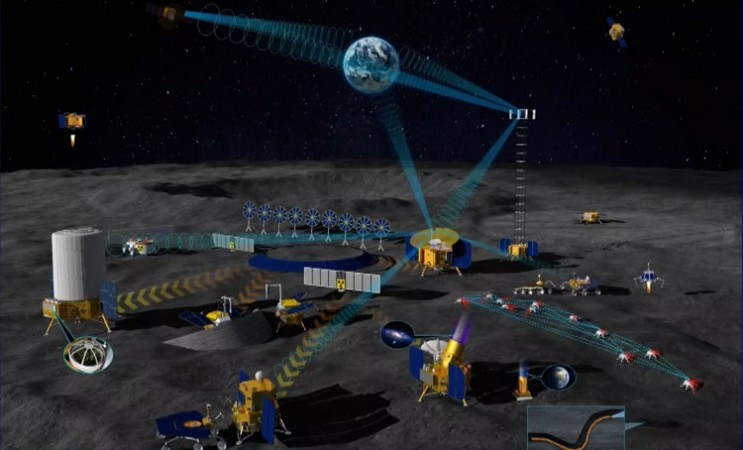
China is extending a warm invitation to the global space community for collaboration on its International Lunar Research Station (ILRS). Li Guoping, the Chief Engineer at the China National Space Administration (CNSA), unveiled comprehensive insights into China's ambitious space exploration endeavors during the International Astronautical Congress held in Baku, Azerbaijan.
One of China's imminent missions, the Chang'e 6, is poised to make history as it strives to become the first lunar far side sample return mission. This remarkable undertaking, slated for a 2026 launch, is building upon the success of the Chang'e 5 mission. International collaboration is a key element of this mission, with contributions from France, Italy, and the European Space Agency (ESA). Supporting this mission is the Queqiao 2, also known as 'Magpie Bridge 2,' a lunar orbiter designed to serve as a vital data relay, facilitating seamless communication between the lunar lander and mission control.
Chang'e 6 is anticipated to retrieve two kilograms of lunar material, mirroring the achievements of its predecessor, Chang'e 5. Meanwhile, the Chang'e 7 mission, scheduled for a 2026 liftoff, is charting a course for the Moon's south pole. China has received proposals from more than eight countries seeking to contribute international payloads to this mission, and these proposals are currently under evaluation. In tandem, the Chang'e 8 mission, set to launch in 2028, will also target the Moon's south pole and serve as the pioneering mission for the establishment of the International Lunar Research Station (ILRS), which China envisions as a research hub at the Moon's southern extremity.
Chang'e 8 is allocating approximately 200 kilograms of payload capacity on one side of its lander for international payloads, and the CNSA is actively soliciting proposals from potential collaborators. In a significant development, China has initiated a crewed lunar program with the ambitious goal of landing astronauts on the Moon by 2030. To support this endeavor, CNSA is developing a robust, heavy-lift launch vehicle capable of carrying astronauts to Earth orbit and beyond. Complementing these lunar missions, Tianwen-2 is planned as an asteroid sample return program, Tianwen-3 aims to bring back samples from Mars, and Tianwen-4, envisioned for the end of the decade, will embark on planetary exploration, targeting Jupiter. Li Guoping emphasized that the data and samples collected from these missions will be made available to the global scientific community for research purposes.
China is actively engaged in collaborative efforts with numerous countries, with a notable partnership being established with Roscosmos. The spirit of cooperation extends to the sharing of lunar samples obtained from the Chang'e 5 mission with international collaborators. Regarding the international partnership for the ILRS, Guoping emphasized, "The ILRS program was initiated several years ago by Chinese scientists. As I mentioned, the Chang'e 6, Chang'e 7, and Chang'e 8 missions will lay the foundations for the future construction of ILRS. The goal of this mission is to establish long-term, stable operations of payloads and spacecraft in lunar orbit and on the lunar surface. In the future, when astronauts journey to the Moon, they will have the opportunity to conduct scientific research using ILRS facilities. This program is fully open, and we are currently engaged in negotiations with various countries and international organizations on both bilateral and multilateral levels."
The CNSA is actively seeking various forms of cooperation with other space agencies in the development of ILRS, offering flexibility for partners to contribute to the project in alignment with their capabilities and circumstances. Guoping explained, "Different partners, depending on their own capabilities and circumstances, can provide payloads or instruments. All contributions are welcome. Another avenue of collaboration is in scientific research, involving the analysis of data and samples returned from ILRS missions." The ILRS, a visionary endeavor, is a long-term project encompassing the years from 2025 to 2040. China's commitment to international collaboration in space exploration promises a brighter future for lunar research and beyond.